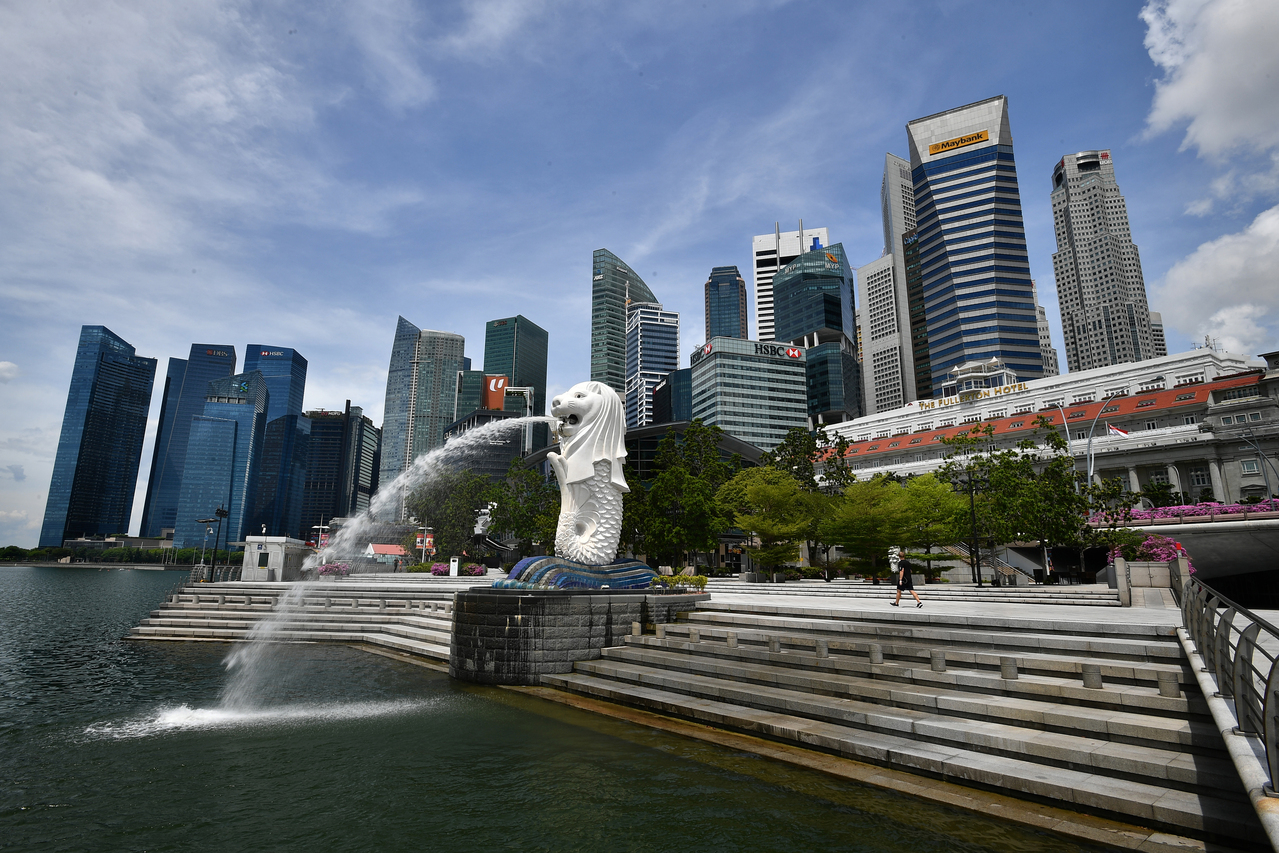Commentary
Once-in-a-lifetime opportunity for investors as South-east Asia goes green
Sign up now: Get ST's newsletters delivered to your inbox

South-east Asia's governments are pledging investment in green technology.
PHOTO: ST FILE
James Cheo
Follow topic:
SINGAPORE - Governments across Asia have pledged ambitious carbon neutrality plans backed by massive stimulus to push for green and sustainable industries. And for good reason, as the stakes are high.
Asia has 15 of the world's 20 most vulnerable cities and crop yields could fall by 7 per cent to 25 per cent over the next 30 to 50 years.
As part of wider response measures, South-east Asia's governments are pledging investment in green technology. These commitments not only seek to address the immediate climate issues but have also the potential to create more than US$1 trillion (S$1.3 trillion) in annual economic opportunities by 2030, according to consultancy Bain.
For investors, this is a nascent opportunity as an emerging thematic trend.
Here are some market developments to look out for:
1. Sustainable smart cities
South-east Asia is expecting a population surge of 90 million in the next decade, which will put more stress on existing infrastructure.
Cities are a key contributor to climate change, responsible for 75 per cent of carbon emissions, with transport and buildings being the largest emitters.
Smart-building solutions can unlock cost savings by adopting efficient energy usage.
However, to solve climate change, the future of transport has to be electric, which is currently insignificant at under 1 per cent of market penetration globally.
Indonesia has an ambitious target of producing 20 per cent of electric vehicles out of their total production in the next five years.
Globally, electric vehicles are expected to grow by 36 per cent annually, reaching 245 million vehicles in 2030 - more than 30 times above today's level.
South-east Asia, coming from a low base, is expected to see bigger exponential expansion. In the region, electric two- and three-wheelers will likely represent the lion's share of the total electric vehicle fleet.
With such goals, there will be immense improvements in electric vehicle infrastructure. For example, Singapore is aiming to deploy 60,000 charging points and require all newly registered cars to be cleaner-energy models by 2030 and phase out internal combustion engines by 2040.
2. Energy transition
Resource extraction and energy generation are still very much coal-reliant and inefficient in the region, and must be decarbonised in a sustainable manner. Asean has set a target of 23 per cent share of renewable energy in primary energy supply by 2025.
It is not realistic to suddenly replace fossil fuels with renewables. However, the transition to natural gas is one low-hanging fruit. The advancement of green hydrogen technology can possibly be a solution, but solar and wind have the potential to grow significantly due to the substantial land mass of the region.
The Singapore Government has committed to quadrupling solar energy deployment by 2025, including covering the rooftops of public housing blocks with solar panels. In another decade, the ambition is to deploy five times that of today, with at least two gigawatt-peak, capable of powering over 350,000 households a year.
Singapore can also play a crucial role as a clean-tech hub as a test bed for commercialisation of new green technologies - such as green hydrogen and battery storage capabilities - and scale these solutions in other markets.
3. Sustainable food chains
Agricultural practices are subsistence-oriented and inefficient in many parts of the region. However, employing technology and localising production are key to feeding a growing and large urban population in a sustainable manner.
Singapore, as a small city with limited land for traditional agriculture, wants to increase its local food production through vertical farms and sustainable aquaculture that can increase yield. This includes the recently announced commitment of $60 million for a new Agri-Food Cluster Transformation Fund, which will support tech adoption in the sector.
Also consider the upside in the development of alternative plant-based protein, which is estimated to generate $14 billion by 2025 globally. Singapore can be the launchpad for alternative plant-protein research such as cell-cultured protein and the development of a plant-protein production hub for the region.
Swedish oat milk manufacturer Oatly, for instance, has chosen Singapore for its first factory in the Asia-Pacific region.
4. Reconfiguring supply chains
South-east Asia's manufacturing hub can become a viable alternative to China - and supply chains can be reconfigured sustainably. As supply chains shift to this region, more robotics and automation will be employed to improve productivity and energy efficiency.
Furthermore, the implementation of the Regional Comprehensive Economic Partnership trade agreement will allow standardisation of cross-border regulations, which will promote trade efficiencies, streamline logistics and eventually reduce carbon emissions.
South-east Asia's green revolution should not be ignored by investors.
All companies across all sectors will be affected by climate change and pressured by their shareholders to become net-zero and have an action plan in place.
There is a need for investors to be aware of these trends and avoid companies that fail to adapt to these changes.
At the same time, investors can gain exposure to South-east Asia's green opportunities either through global companies - with strong environmental, social and corporate governance scores - or pure-play companies that are pushing the boundaries of green innovation.
Knowing what lies ahead will position your portfolio to capture a once-in-a-lifetime value creation opportunity.
• The writer is the chief investment officer for South-east Asia at HSBC's global private banking and wealth management.

